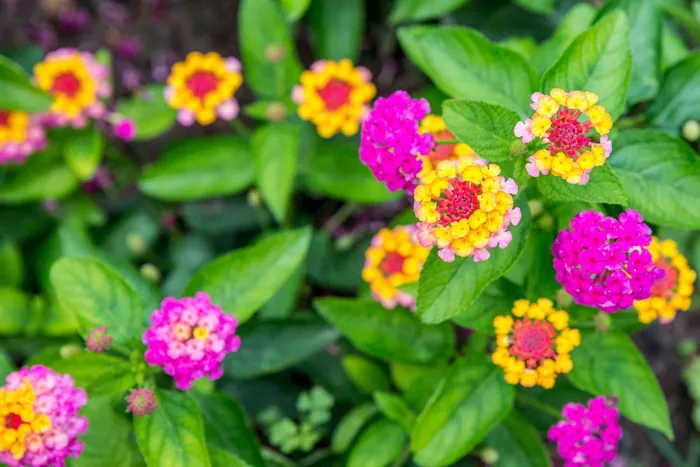Lantana, with its vibrant clusters of flowers and lush green leaves, is a popular choice for gardens and landscapes worldwide. However, amidst its aesthetic appeal lies a potential danger, especially for our beloved canine companions. The question of whether lantana flowers are poisonous to dogs has sparked concern among pet owners and veterinarians alike. In this article, we delve deep into the scientific literature to uncover the truth behind lantana toxicity in dogs, exploring its effects, symptoms, and preventive measures.
Understanding Lantana: A Botanical Overview
Lantana (Lantana camara) is a genus comprising over 150 species of flowering plants belonging to the Verbenaceae family. Native to tropical regions of the Americas and Africa, lantana is renowned for its resilience, adaptability, and colorful blooms. Its flowers, which come in various shades including yellow, orange, pink, and purple, attract pollinators such as butterflies and bees, enhancing its allure in gardens.
While lantana is prized for its ornamental value, it harbors toxic compounds known as triterpenoids, specifically pentacyclic triterpenes, which include lantadene A and lantadene B. These chemicals are primarily concentrated in the foliage and unripe berries of the plant, serving as a defense mechanism against herbivores.
The Toxicity of Lantana to Dogs: Unraveling the Dangers
The toxicity of lantana to dogs stems from the ingestion of various parts of the plant, particularly the leaves and berries. When consumed, lantadene compounds disrupt cellular function, leading to a cascade of adverse effects in dogs. The severity of toxicity can vary depending on factors such as the amount ingested, the size of the dog, and the dog’s overall health.
Clinical Manifestations of Lantana Toxicity in Dogs
Dogs exposed to lantana may exhibit a spectrum of clinical signs, ranging from mild gastrointestinal upset to severe systemic toxicity. Common symptoms include:
- Vomiting
- Diarrhea
- Abdominal pain
- Drooling
- Lethargy
- Weakness
- Loss of appetite
- Jaundice
- Difficulty breathing
- Seizures
In severe cases, lantana toxicity can lead to liver failure, renal failure, and even death if left untreated. Prompt veterinary intervention is crucial to mitigate the toxic effects and improve the prognosis for affected dogs.
Diagnosis and Treatment of Lantana Toxicity
Diagnosing lantana toxicity in dogs often involves a combination of clinical signs, history of exposure, and laboratory tests. Blood work may reveal abnormalities such as elevated liver enzymes, electrolyte imbalances, and metabolic acidosis. Imaging studies such as abdominal ultrasound may be indicated to assess organ damage.
Treatment of lantana toxicity focuses on supportive care and symptomatic management. This may include:
1. Inducing vomiting to remove ingested plant material from the stomach.
2. Administering activated charcoal to absorb toxins in the gastrointestinal tract.
3. Intravenous fluid therapy to maintain hydration and support renal function.
4. Antiemetics to control vomiting and nausea.
5. Hepatoprotective medications to support liver function.
6. Monitoring for complications such as hepatic encephalopathy and disseminated intravascular coagulation.
In severe cases, dogs may require hospitalization in an intensive care unit for close monitoring and aggressive therapy. Prognosis depends on the extent of organ damage and the timeliness of intervention.
Preventive Measures: Keeping Dogs Safe from Lantana Toxicity
Prevention remains the cornerstone of protecting dogs from lantana toxicity. Pet owners can take the following precautions to minimize the risk of exposure:
1. Awareness: Educate oneself about the dangers of lantana toxicity and the signs of poisoning in dogs.
2. Gardening Practices: Avoid planting lantana in areas accessible to dogs, particularly in yards or gardens frequented by pets.
3. Supervision: Supervise dogs when outdoors to prevent them from foraging on potentially toxic plants.
4. Training: Train dogs to avoid consuming unfamiliar plants or objects during walks or outings.
5. Prompt Intervention: Seek veterinary attention immediately if ingestion of lantana is suspected, even if clinical signs are not yet evident.
6. Alternative Landscaping: Consider alternative pet-friendly plants for landscaping, such as marigolds, petunias, or snapdragons, which pose minimal risk of toxicity to dogs.
By implementing these preventive measures, pet owners can create a safer environment for their canine companions and reduce the likelihood of lantana poisoning incidents.
Conclusion
Lantana flowers contain toxic compounds that pose a risk to dogs if ingested. While lantana toxicity can lead to a range of clinical manifestations, prompt recognition and intervention are essential for ensuring positive outcomes. By raising awareness, practicing vigilant supervision, and adopting preventive measures, pet owners can safeguard their dogs from the dangers of lantana poisoning. Veterinary professionals play a crucial role in diagnosing and treating affected dogs, emphasizing the importance of collaboration between pet owners and healthcare providers in promoting canine well-being. Together, we can strive towards a safer and healthier environment for our beloved canine companions.


